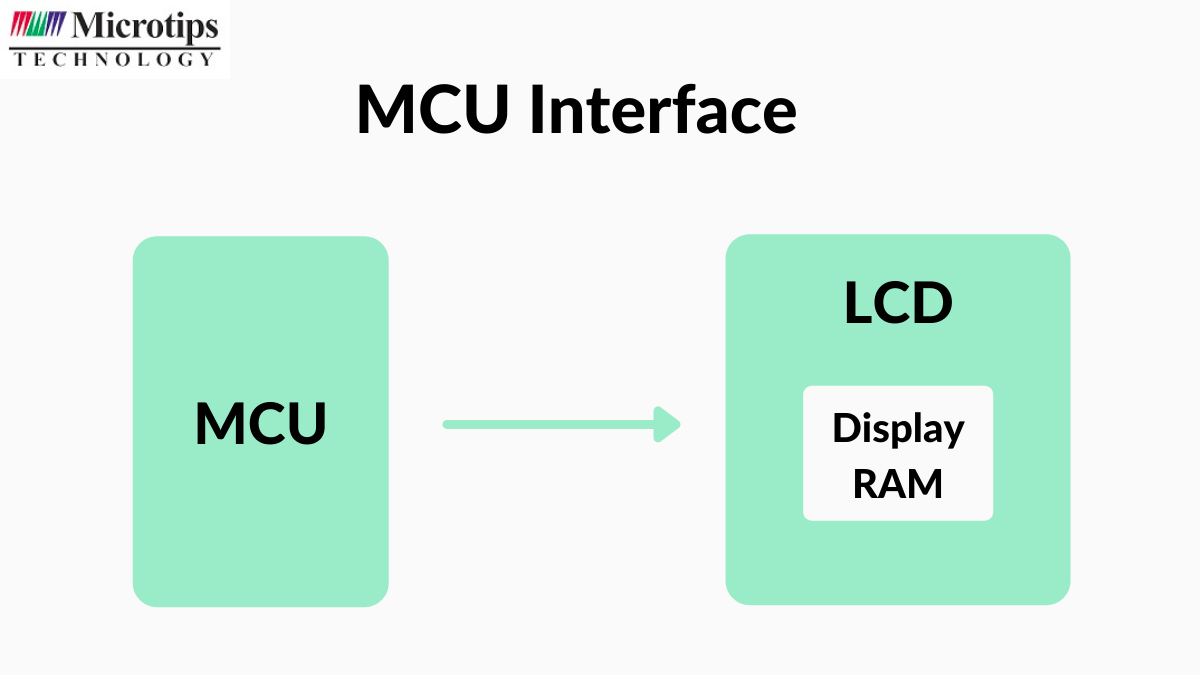Graphical displays can be more attractive when it comes to creating a flexible user interface. But, they require more CPU time to update the data than other display types, i.e., segmented or character displays.
What we call display interfaces are display controllers that are used to transmit data.
The most popular type of interface used in display modules is the parallel interface. MCU (microcontroller unit) and RGB parallel interface are the two most common types of parallel interface.
Both MCU and RGB parallel interfaces can be used in a variety of applications.
MCU interfaces are available in two standard forms, Intel-8080 and Motorola-6800 series. These interfaces communicate through an integrated display controller and frame buffer.
We know that you might have some bubbling questions by now, such as, what is an Integrated display controller? What is a frame buffer? What do all of them get to do with the MCU interface? What is the difference between RGB and MCU interfaces?
Let’s explore the answers in the blog post hereon.
Understanding The Mechanism
The frame buffer is the memory space that holds the pixel data being displayed. There are internal frame buffers in smart displays that are stored on RAM. The MCU display interface reads the frame buffer every time to update the display.
The MCU interface progresses through frames at an increased rate to read pixels from the display controller. It can read and write data and display images directly from the internal memory.
MCU supplies both pixel data and timing signals in the display systems.
Difference Between MCU and RGB Display Interface
Unlike the MCU interface, the RGB interface works without the participation of any frame buffer.
So, which should you choose between MCU and RGB for your displays?
Well, that completely depends on the deployable application of the displays. Different interfaces may exhibit diversified requirements in terms of processing speed and memory space.
Alongside this, there can be differences in pin availability.
Despite needing more pins, higher processing speed, and memory allocation, RGB display interfaces can be deployed easily in high-performance displays.
On the other hand, MCU interfaces use a frame buffer which makes them easily operable without any hampering timing requirements.
In a Nutshell
After a mutual comparison of features and working mechanisms, we can conclude that choosing parallel MCU can be more advantageous for displaying images. These are less expensive and easily controllable.
Microtips Technology, a US-based LCD display manufacturer and distributor with global exposure, has been using both RGB and MCU interfaces in their TFT display panels and touch panel displays. However, most of their deliverables feature MCU interfaces primarily.

